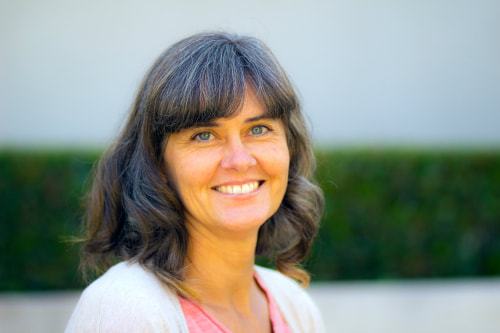|
Ph.D. student Kimberly Telfer-Radzat and UCI alumna Dr. Sarah Bach received proposal approval on March 6 from the Orange County Department of Education (OCDE) for the establishment of a new elementary school, Sycamore Creek Community Charter School, in Huntington Beach, California. This free public charter school will serve K-6 with arts-integrated curriculum inspired by Waldorf methodologies. Below, Telfer-Radzat provides historical perspective about the Steiner/Waldorf system and shares why she values this arts-focused approach to education.
March 2019 Historical Perspective The first Steiner (Waldorf) school opened on September 19, 1919, in Stuttgart, Germany. The school was introduced as a social response to the horrors of World War I. Waldorf Schools now are largest non-religious, non-profit, private school system in the world, according to the Associated Waldorf Schools of North America (AWSNA),. Today there are over 1,100 private Waldorf/Steiner schools in 64 countries and 1,700 kindergartens in more than 80 countries (European Council for Steiner Waldorf Education, 2017). Among the myriad of school systems, Waldorf stands out because of its unique approach to education; the arts are foundational not only to the Waldorf curriculum but to the instructional approach and classroom design as well. Waldorf education was intended by its founder, Rudolf Steiner, to be accessible to all, regardless of gender or class. Much of how they do what they do flies in the face of traditional practices, including delaying formal academics until first grade, utilizing direct instruction instead of textbooks, eschewing testing, teaching from the whole to the parts, asking the same teacher to teach the same group of children for eight consecutive years (1st – 8th grade, referred to as looping), and approaching all subjects through an artistic lens. Recently, the private Waldorf school movement has expanded into the public school realm. The number of Waldorf charters has grown significantly. There are currently 43 public charter schools listed nationally on the Alliance for Public Waldorf Education website, with an additional 10+ that are in development. Sycamore Creek Charter School (SCCCS) which will be located in the Ocean View School District is the latest school to have been granted a charter and the second in Orange County. The other Waldorf-inspired charter, Journey School in Aliso Viejo, currently has 450 students in K-8 and maintains a waitlist hovering near 100 students. SCCCS hopes to open in September, serving PK-6th and to increase one grade per year up to 8th grade. Personal Perspective I have spent the past 15 years teaching at the private Waldorf School of Orange County (WSOC), first as a remedial teacher and then as a “main lesson” teacher. Both of my children attended K-12th grades there. In 2007, I started with a group of 33 students in 1st grade and continued with the same students through the end of 8th grade. It was both the most challenging and the most rewarding thing I have ever done. As a result, after completing the cycle, I wanted to see if I could contribute to a deeper understanding of why I think what the pedagogy offers, works. The schools have historically shown little interest in outside research and maintained a bit of an isolated stance. By 2015 it seemed that the times were changing and they might be willing to open their doors to inquiry. In particular, I was interested in how the complex, varied, and broad curriculum might help to develop executive function (EF) skills in our students. In addition to E.F., I am interested in better understanding looping and motivation in students when stakes are low, virtually no testing is done, and the arts are integral. One area that has yet to be studied at all is the kindergarten. With the huge emphasis on storytelling and oral language, I think this could be an interesting area for research and the new charter school could be the place for that. The most recent large study, Growing a Waldorf-Inspired Approach in a Public School District, was conducted by SCOPE through Stanford University. This mixed-methods study interviewed educators, students, and parents, conducted observations, evaluated performance, and examined how a district can support alternative models of education while working to ensure equitable access to a high quality education for all students. It is my desire to add to this growing body of research. Comments are closed.
|
Resources for:
|
|


